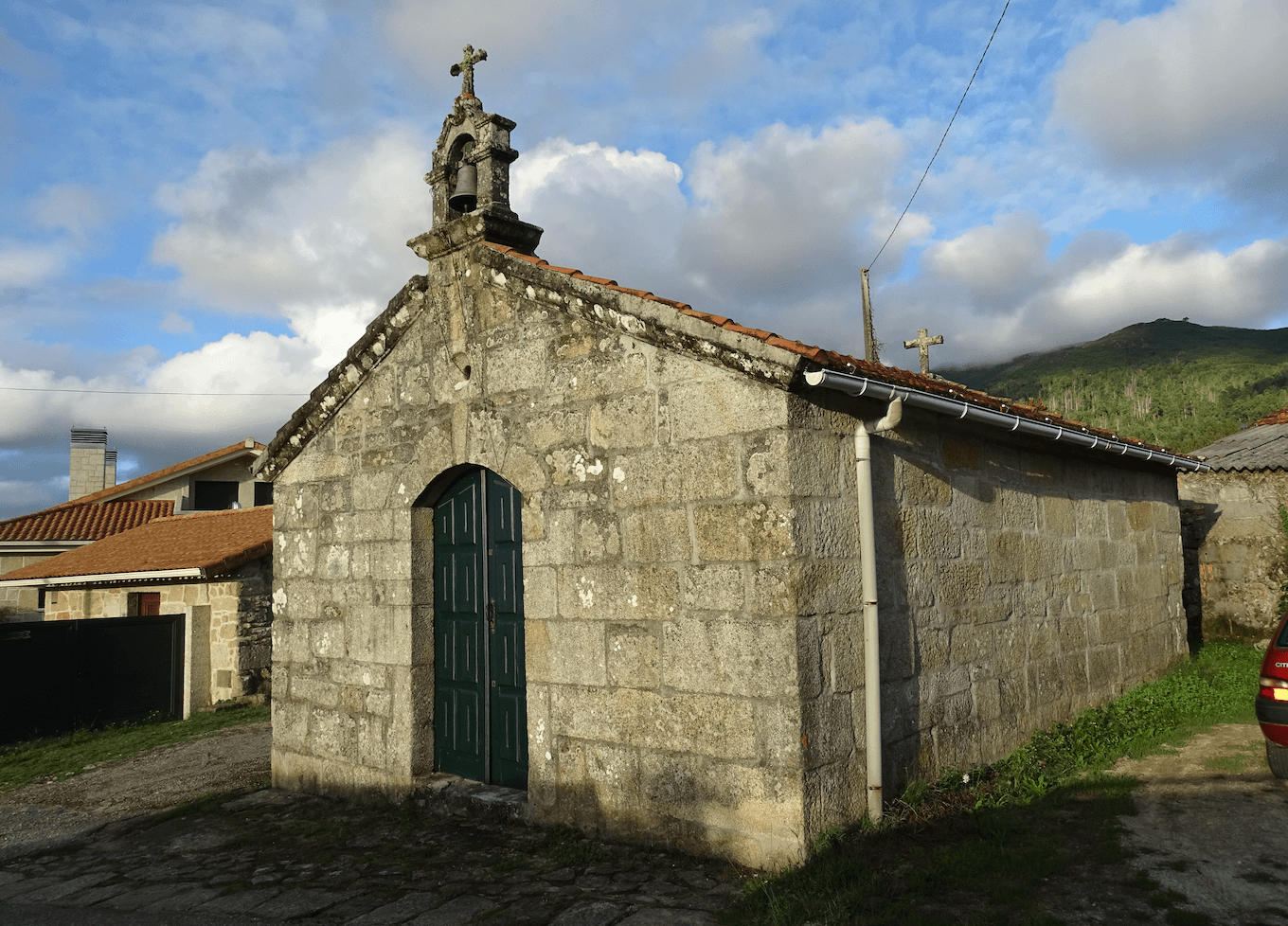St. Sebastian's Chapel

The hermitage of San Sebastián is mentioned for the first *me in the report of the pastoral visit of 1754. In that of 1780 it is ordered that "the crucifix of the altar and its pedestal be retouched, that the wood in the middle of the cloak be removed, preventing the view of the altar, securing the roof, which will be re-roofed with two crosses. That the attic be repaired, and that the arch of the cloak be closed with stonework, removing the balusters, leaving a window for prayer, and that a book be purchased in which the accounts are made up, to be presented at the visits for review and approval".
In 1818 the steward of San Sebastián was Rosa Argüelles, wife of Manuel Antonio Ribas, a surgeon from A Moreira, who did a thorough repair of the chapel at his own expense.
The chapel is mentioned as belonging to the parish in 1854, stating that it measures "six metres in length and five in latitude", and that mass is celebrated there on occasion and, annually (on 20 January, when San Sebastián and Santa Lucía are taken out in procession), the functions of the patron saint are held there.
In 1883, a new, more spacious and suitable chapel was built near the old one. The builders were José Eiró and Antonio López. Later, the benefits that it would enjoy from the "immense favours that through the mediation of the glorious martyr San Sebastián had just experienced this year, causing the contagion to cease" were also recognised. Popular devo*on made Saint Sebastian the protector of the plague, possibly because the spread of the disease through the air made it comparable to the arrows, which are an essential attribute of the martyr. Another possibility is that the plague was considered a divine punishment, like arrows sent by God, reminiscent of the god Apolo.


